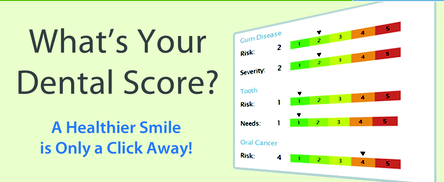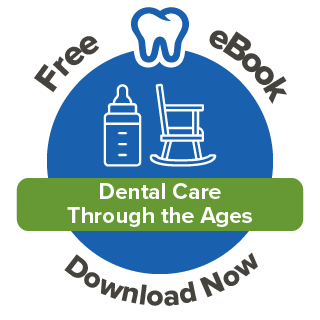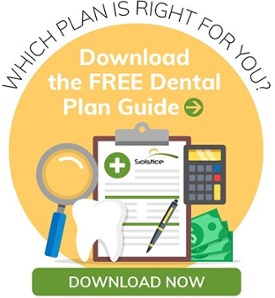By Alissa Gavrilescu on Jan 10, 2014 @ 05:32 PM
From diabetes to heart disease, your oral health impacts more than just your smile.
The Affordable Care Act (ACA) includes a dental health benefit for children as part of the defined Essential Health Benefits. The prospect of child-only coverage being promoted and sold both in and out of exchanges come 2014 means some adults could question the value of purchasing dental benefits just for themselves. However, good dental health is important not only for children, but for their parents as well. The following are key points to consider regarding the importance of dental health throughout adulthood.
Young Adulthood:
As an adult, care of your teeth continues to be important. Although the occurrence of cavities typically decreases once you reach young adulthood, your need for dental treatment can still be acute, particularly if you have had a history of decay when you were a child or adolescent.
When permanent teeth come in improperly with overcrowding or crooked teeth, these situations can cause issues related to speech and/or eating as well as creating a poor self-image. Additionally, malposed teeth are harder to maintain which could lead to gum inflammation and even periodontal disease. It’s important to have them adjusted through the use of braces.
Young adults, not just children and adolescents, might find themselves involved in team and individual sports where the possibilities of face and head injuries increase. Mouth guards lower the likelihood of tooth loss in the case of a hit to the face or head.
A disorder common in people between the ages of 20 and 40 is referred to as TMJ (temporomandibular joint). TMJ, which is often related to stress, can lead to pain of the facial muscles, grinding/clenching teeth, and joint dislocation requiring therapies ranging from palliative treatments, to a night guard, and in rare cases surgical intervention
Gingivitis, or inflammation of the gums, becomes more common during young adulthood and if left untreated can result in periodontal disease, which is a breakdown of the bone and ligaments, holding the teeth in place
Adulthood:
Issues first appearing in young adulthood can begin to worsen during our middle years. Periodontal (gum) disease, a chronic inflammatory disease that affects the gum tissue and bone supporting the teeth, is a condition that can occur at any age, but tends to become more prevalent in the mid- to latter adulthood. A study titled Prevalence of Periodontitis in Adults in the United States: 2009 and 2010, release by the Centers for Disease Control and Prevention (CDC) in 2012, reports an estimated 47.2 percent (64.7 million) adult Americans have mild, moderate or severe gum disease.
Individuals in this group will also see an increase in failing dental work. Fillings that crack or fall out or older technology that fails may result in unexpected dental care. Caries (cavities, tooth decay) that may develop in the cracked or loose filling, if allowed to go untreated long enough, can result in larger fillings, the need for crowns and/or root canals.
Often, adults who lost teeth years earlier and chose not to take care of the gap may now see that their teeth have moved or become loose, causing problems with their natural bite.
Seniors:
The same 2012 CDC report estimates increases in periodontal disease to 70.1 percent for adults 65 and older. These numbers are staggering considering the availability to dental care for most Americans and should be a signal for concern considering the relationship gum disease has and may have with a number of chronic conditions.
Increased use of prescription drugs may impact oral health in a variety of ways that could include changes in tooth color, a weakened tooth structure, oral fungus and decreased levels of saliva, leading to dry mouth and even higher rates of tooth decay.
Teeth can become darker often because of changes in dentin and/or a lifetime of eating stain-causing foods and beverages.
Dry mouth caused by reduced saliva flow – as noted earlier this can be related to medication but could also result from chronic diseases such as diabetes
Root decay - caused by exposure of the tooth root to decay-causing acids. This often results from gum recession – the tooth roots are not protected by tooth enamel and are therefore more prone to tooth decay
Tooth loss – multiple causes which include tooth decay and gum disease and can result in an uneven bit and jaw pain.
Denture-induced stomatitis - Ill-fitting dentures, poor dental hygiene, or a buildup of the fungus cause this condition, which is inflammation of the tissue underlying a denture.
All age groups are susceptible to oral cancer, but those who smoke or drink excessively have a higher risk. Oral cancer is also increasing in younger members, thought to be the result of human papillomavirus (HPV).
The prevalence of periodontal disease is extensive and should be a consideration for adults of all ages, but especially those who have chronic illnesses. Let’s explore these relationships further.
Diabetes
Nearly 26 million Americans with diabetes, many may be surprised to learn that there is an increased prevalence of gum disease among those with diabetes.2
Gum disease involves infection, which can affect blood sugar levels, making it harder for diabetics to control symptoms. Controlling the infection can help control a person’s diabetes.
Heart Conditions and Coronary Artery Disease3
Heart disease remains the leading cause of death and disability in the United States, and by 2030, will remain the leading single-disease cause of death globally.
A recent review of published studies reinforce that heart disease and gum disease are associated independent of other risk factors such as smoking or diabetes. Heart patients should include good oral health as part of their overall heart health to reduce inflammation and their disease burden.
Asthma
Patients taking asthma medication may be at risk of dental caries, dental erosion, periodontal diseases and oral candidiasis. Patients with bronchial asthma on medication should seek regular professional dental care.4
Kidney Disease
26 million (14%) American adults have chronic kidney disease (CKD). About half a million have end-stage renal disease (generally associated with diabetes). Kidney disease accelerates the progression of heart disease and increases the risk of heart attacks and heart disease-related death5, both of which show increase risk of gum disease.5 Interestingly, those with CKD are 25% less likely to visit a dentist.6
COPD
COPD is the third leading cause of death in America with a projected cost to the nation of approximately $49.9 billion.7
Based on current evidence, gum disease is a significant and independent risk factor of COPD.8 COPD patients may use steroids which can make them susceptible to oral fungal (yeast) infections called candidiasis, or thrush.9
These studies support the importance of maintaining good dental health and at least once yearly making an appointment with your dentist to have a periodontal exam.
About NADP
National Association of Dental Plans (NADP), a Texas nonprofit corporation with headquarters in Dallas, Texas, is the “representative and recognized resource of the dental benefits industry.” NADP is the only national trade organization that includes the full spectrum of dental benefits companies operating in the United States. NADP member plans provide Dental HMO, Dental PPO, Dental Indemnity and Discount Dental products to 160 million Americans, more than 90 percent of all Americans with dental benefits. Follow NADPorg on Twitter.
2 American Diabetes Association, Diabetes and Oral Health Problems, http://www.diabetes.org/living-with-diabetes/treatment-and-care/oral-health-and-hygiene/diabetes-and-oral.html, 2013
3 American Heart Association, Periodontal Disease and Atherosclerosis: True, True, Possibly Related, http://my.americanheart.org/professional/General/Periodontal-Disease-and-Atherosclerosis-True-True-Possibly-Related_UCM_439314_Article.jsp, April 18, 2012
4 Asthma and oral health: a review, Aust Dent J. 2010 Jun;55(2):128-33. doi: 10.1111/j.1834-7819.2010.01226.x., http://www.ncbi.nlm.nih.gov/pubmed/20604752
5 American Society of Nephrology, Kidney Disease by the Numbers, http://www.asn-online.org/policy/webdocs/KDConcepttoCure.pdf,
6 US National Library of Medicine, National Institutes of Health, http://www.ncbi.nlm.nih.gov/pubmed/22471751, BMC Nephrol. 2012 Apr 2;13:16. doi: 10.1186/1471-2369-13-16
7 American Lung Association, Chronic Obstructive Pulmonary Disease (COPD) Fact Sheet, http://www.lung.org/lung-disease/copd/resources/facts-figures/COPD-Fact-Sheet.html, February 2011
8 Periodontal Disease and Risk of Chronic Obstructive Pulmonary Disease: A Meta-Analysis of Observational Studies, US National Library of Medicine and National Institutes of Health, http://www.ncbi.nlm.nih.gov/pmc/articles/PMC3477163/, 2012 October 19
9 Colgate Oral and Dental Resource Center, Respiratory (as reviewed by Columbia University College of Dental Medicine), http://www.colgate.com/app/CP/US/EN/OC/Information/Articles/Oral-and-Dental-Health-Basics/Medical-Conditions/Physical-Disorder-Oral-Effects/article/Respiratory.cvsp, 2012





comments